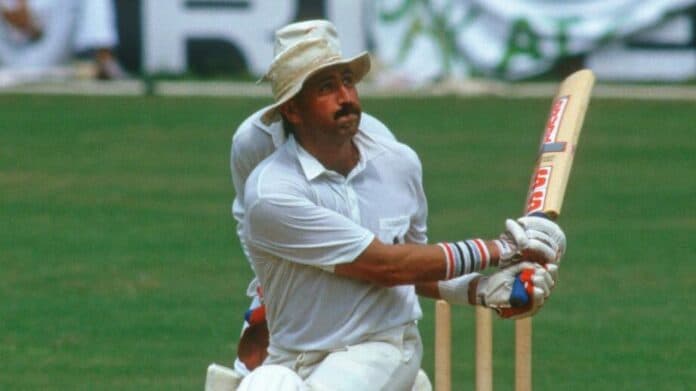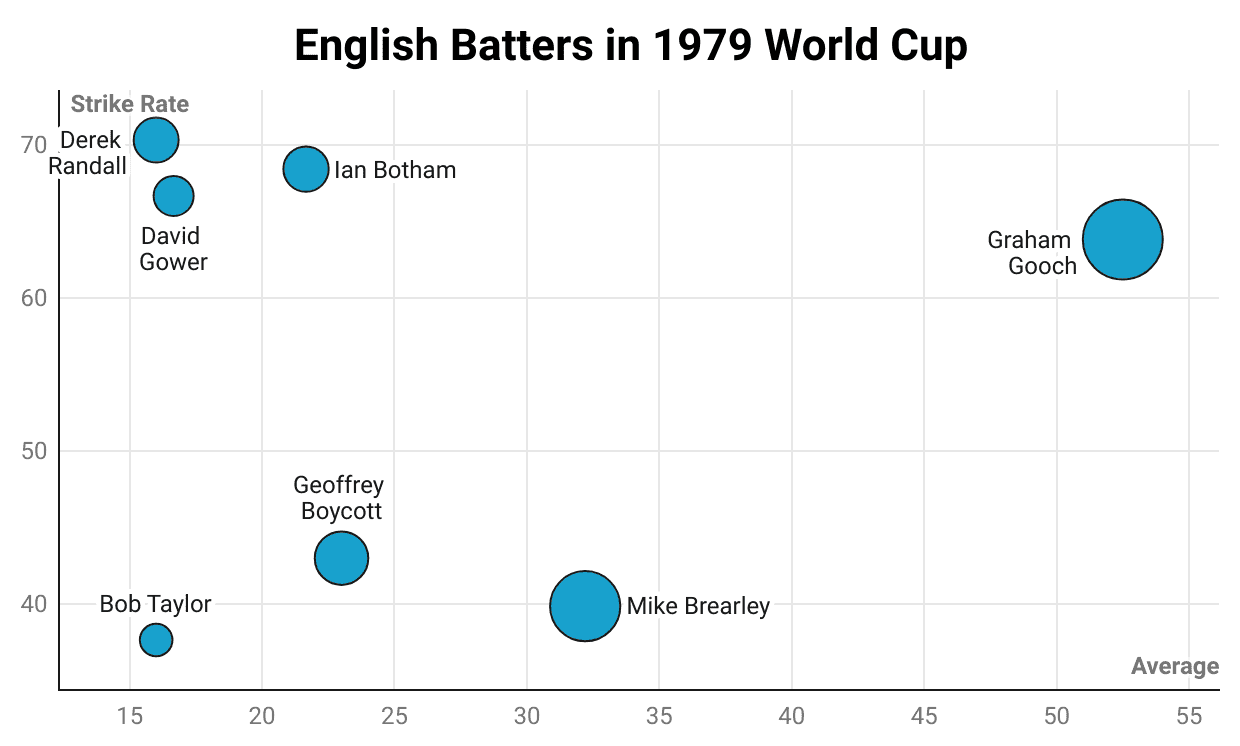Winning; the primary motive for the majority, if not all, of the kids who pick up a bat or a ball while aspiring to represent their respective nations. As Gautam Gambhir keeps on repeating nowadays, the first daydream that all budding cricketers watch is to lift the World Cup, the ultimate glory in our sport. Even we, the fans, are highly result-oriented.
The process is more important than the result
One of the most popular and exceptional Indian cricketers, Mahendra Singh Dhoni believes
Ironically, his biggest legacy within the 22 yards amongst his own fans is his 3 ICC trophies and 5 IPLs.
And I am not criticising this kind of outlook on the sport. At the end of the day, we all want our respective teams, the ones we play for or support, to triumph in all the tournaments they take part in. However, the question is whether we should extend the same outlook while comparing two individuals within a team game like cricket. Cricket, as many call it, the only individual team-sport in the world, is still technically a team sport, a result which depends upon the 22 individuals who take the field. Certain cricketers keep on gracing the world stage who impact this very result more than an average cricketer; however, the entire outcome is seldom solely in their hands. In that case, is it fair to give extra credit to player A just because his team won more than the team player B played for?
Well, this is one side of the story, presenting my views on this topic. I am pretty sure the other school of thought also possesses strong arguments in its favour. The subject of today’s article revolves around the World Cup exploits of Player B, a player who took part in 3 ODI World Cups and won 3 runners-up medals.
The most prolific run-getter across 146 years of competitive cricket, Graham Gooch’s World Cup career is a caricature of the tragic hero archetype. A trope that is universal in its appeal, even in modern-day art, if one indeed presented the following outcomes in the form of fiction, odds are that their work would have been critiqued for being too cliché. To start off, it’s a tragedy in itself that Gooch was part of just 3 CWC campaigns despite his ODI career spanning over 20 years. His first one-day was 12-months after the inaugural tournament, whereas his last one-day was 12-months prior to the 96’ campaign. In-between these, he also missed the 1983 World Cup due to his ban from international cricket owing to his participation in the rebel tours. Thus, his first tragic tryst with triumph came in ’79.
The percentage of the actual impact of the performances that statistics provide differs from case-to-case and Gooch’s ODI exploits is amongst the cases where the least amount of justice is served. Possessing one of the most underrated knock catalogues of the format, the above sentiment only gets amplified when the focus is isolated around the World Cup, specifically the first out of today’s 3 tournaments.
210 runs @52.5 with a modest strike rate of 63.82; such numbers look commendable, but 4 batters from the West Indies itself overshadow these raw figures. Thus comes the role of additional context. Gooch was the top scorer in 5 of England’s 6 games while being an outlier in terms of run-scoring. His scoring rate was 1.36 times the strike rate of his fellow English batters.
He started the series with a half-century against Ashes rivals, a rather slower one, but it ensured that England saw off a 160-run chase. In the next game, Gooch once again top-scored in yet another modest chase of 45 against Canada. The last league stage bout had higher stakes than an ordinary dead-rubber since the winner got to avoid West Indies for one extra day. Gooch found himself at the crease in the 3rd over itself despite batting at number 4. On the backdrop of the carnage caused by the new-ball duo of Imran-Bakht, Gooch played one of his slowest limited-overs innings, scoring 33 off 90 deliveries. Yet, only Asif Iqbal scored more (51 off 104), and given the fact that 165 was defended in this match, one can make a rough estimate of the batting conditions. So far, the ’79 run captures the man’s public persona; solid and efficient, yet not the first name which pops up when the adjective ‘best’ is brought up.
The semi-final saw Gooch squaring off against yet another fearsome new-ball duo of Hadlee-Troup, and once again, his arrival was premature at 38/2. Brearley retreated to his usual shell while the other batters surrendered against the 5-man pace attack, but Gooch was playing his finest knock at the grandest stage.
71 runs off just 84 deliveries, the knock consisted of 3 sixes. For context, the rest of the England team struck 2 maximums in the entire tournament. Despite this, the more impressive feat of that day was how Gooch maintained the anomalous strike rate of 84 while scoring nearly 50 runs through running. A knock which was a sneak peek into the future of limited-overs batting blueprint, England’s bowlers closed out the game, and England progressed.
The magic of both Kings is a well-documented folklore, but the absurdity of the 2nd innings deserves attention as well. Till the final, Gooch’s entry points were as follows:
- 5/2 vs Australia
- 11/2 vs Canada
- 4/2 vs Pakistan
- 38/2 vs New Zealand
Hence, it is tragically comedic that while chasing 287 in the most important game of his career till then, Gooch got to enter way too far at the 40th over, yet the scoreboard was stuck at a total of 135. No one knows what the great mind of Mike Brearley was thinking, but it meant the Cup had gone out of our protagonist’s grasp. A cameo of 32(28) deserves appreciation given the quality of the opposition, but the knock was largely inconsequential. The first tryst ended in a longing heartache.
Gooch’s 1979 campaign remains overlooked, but nature loves symmetry, and his next run is much more revered despite having larger imperfections. He was the highest run-getter of the tournament, scoring 471 runs @58.87 with a strike rate of 70.29. However, Lamb and Gatting, two of his teammates themselves, had arguably outbatted him throughout the series. He had a rough start to his campaign, struggling in both the games against Pakistan, but the Sri Lanka games got his tour back on track, and a 92 against the Windies saw both England and Gooch progress through to the semi-finals.
There are very few knocks which have elevated themselves to be synonyms of a particular batting shot, which has its own rich history. Gooch’s century in the semis is amongst this elite roster. Squaring off against the hosts as well as the pre-tournament favourites, Gooch is famously known to have swept Maninder Singh and Co. out of the tournament. His 115 runs were enough for his 3rd Man-of-the-Match award in the series, and a second date with glory was set-up.
Only twice had a team chased over 250 in World Cup games prior to the final, and Australia had set up a target of 254. Having lost his opening partner for a duck, Gooch had a cautious start, scoring 25 off his first 50 balls. England was looking to accelerate, but O’Donnell struck the pads plumb, and Gooch’s struggle terminated. England collapsed with the focal point being Gatting’s ill-fated reverse sweep, and a 2nd runners-up medal was added to Zap’s cabinet.
Gooch is the standard cricketing analogy when it comes to the idiom, “aged like fine wine”. He received England captaincy at the age of 35, played his last international at the age of 42 and scored his test runs @51.56 in the last 5 years of his career! However, things were the exact opposite in the secondary format of those days. Since ascending captaincy in 1988 to his retirement in 1995, Gooch’s average dropped from 42.46 to 31.32, and his strike-rate declined from 68 to a meagre 55! Amidst this free-fall arrived the last call for coronation.
Two half-centuries in the first two games nurtured expectations, but Gooch’s terrible form persisted, with him scoring 216 runs throughout the tournament at an inexcusable scoring rate of 51.43. Although, he had an additional responsibility of captaincy in his 3rd World Cup.
Be it reinstating Botham, who went on to be England’s leading wicket-taker as well as eccentrically promoting him to opening or backing Carl Lewis for the number 7 position where he played crucial cameos at a strike-rate of 156, Gooch was seen more as an inspiring leader than an astute tactician, but he had more hits than misses with his strategic calls in the Australian summer. Tumbling through a path laced with natural calamity and controversy, England and Gooch reached yet another World Cup final. The once anticipated tryst had now morphed into a tense entanglement.
Graham’s first ace of reinstating Pringle with the new-ball worked wonders, but an Imran-Miandad partnership kept the equation balanced. However, England’s lacklustre form with old-ball came to bite them back. Pakistan scored 153 runs in the last 20 overs, and Gooch’s men had to chase yet another 250-run target. The chase started terribly, but a shimmer of optimism lasted as long as the experience of Gooch endured upon the crease.
Mushtaq Ahmed, the premier bowler of the tournament, bowled a conventional leggie around the middle-stump. With the equation now standing at run-a-ball, Gooch made the unwise yet common decision of targeting the leggie. Attacking the longer square boundary, Gooch’s famous sweep found the palms of Aqib Javed during the motion of Pakistan’s most iconic piece of fielding.
Gooch’s ODI career has been lost amongst the many other greats who have trodden onto the 22 yards since his retirement. Alas, present and future glory is destined to evade this silent guardian of 80s ODIs.


